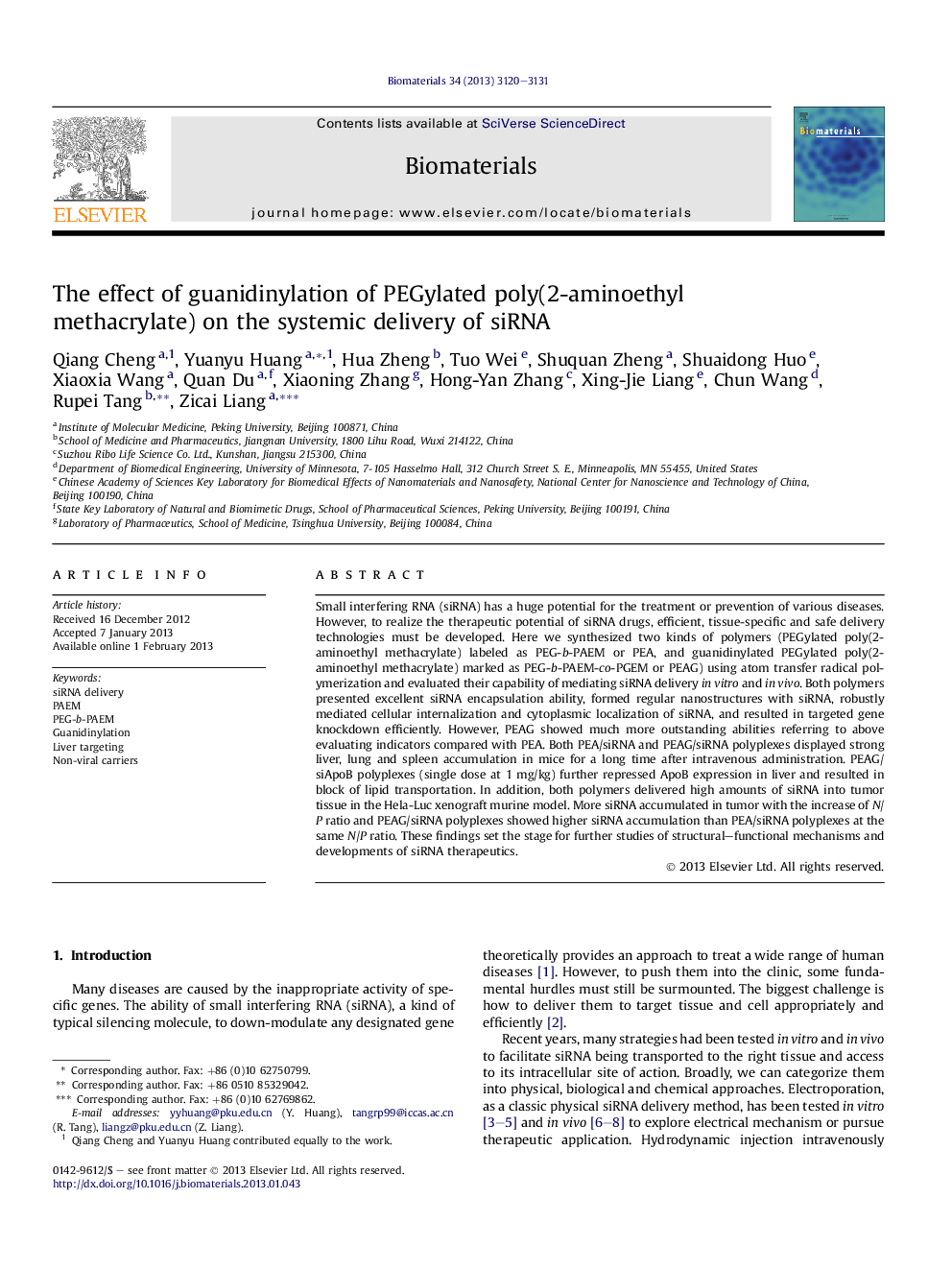| Article ID | Journal | Published Year | Pages | File Type |
|---|---|---|---|---|
| 6276 | Biomaterials | 2013 | 12 Pages |
Small interfering RNA (siRNA) has a huge potential for the treatment or prevention of various diseases. However, to realize the therapeutic potential of siRNA drugs, efficient, tissue-specific and safe delivery technologies must be developed. Here we synthesized two kinds of polymers (PEGylated poly(2-aminoethyl methacrylate) labeled as PEG-b-PAEM or PEA, and guanidinylated PEGylated poly(2-aminoethyl methacrylate) marked as PEG-b-PAEM-co-PGEM or PEAG) using atom transfer radical polymerization and evaluated their capability of mediating siRNA delivery in vitro and in vivo. Both polymers presented excellent siRNA encapsulation ability, formed regular nanostructures with siRNA, robustly mediated cellular internalization and cytoplasmic localization of siRNA, and resulted in targeted gene knockdown efficiently. However, PEAG showed much more outstanding abilities referring to above evaluating indicators compared with PEA. Both PEA/siRNA and PEAG/siRNA polyplexes displayed strong liver, lung and spleen accumulation in mice for a long time after intravenous administration. PEAG/siApoB polyplexes (single dose at 1 mg/kg) further repressed ApoB expression in liver and resulted in block of lipid transportation. In addition, both polymers delivered high amounts of siRNA into tumor tissue in the Hela-Luc xenograft murine model. More siRNA accumulated in tumor with the increase of N/P ratio and PEAG/siRNA polyplexes showed higher siRNA accumulation than PEA/siRNA polyplexes at the same N/P ratio. These findings set the stage for further studies of structural–functional mechanisms and developments of siRNA therapeutics.
